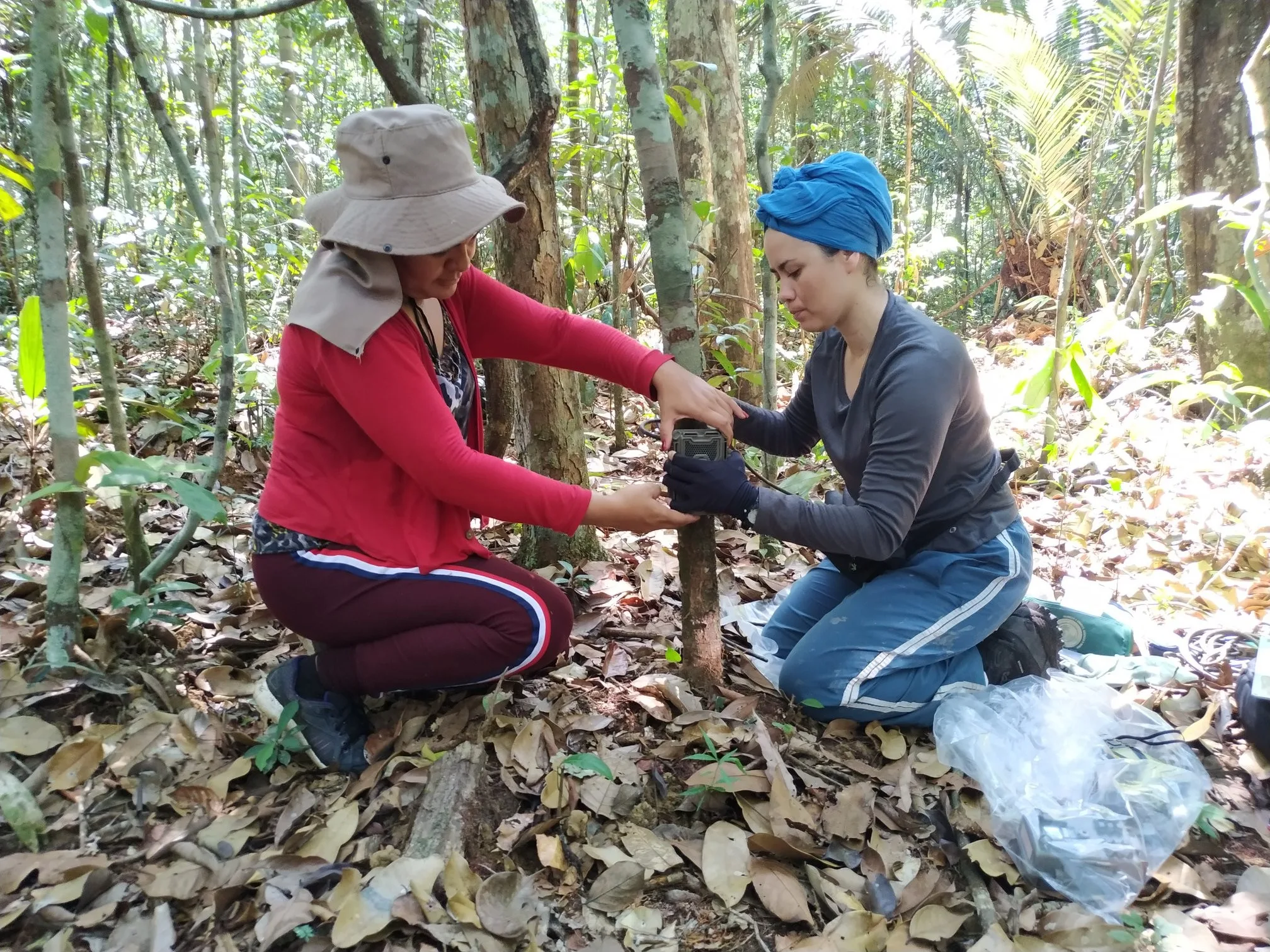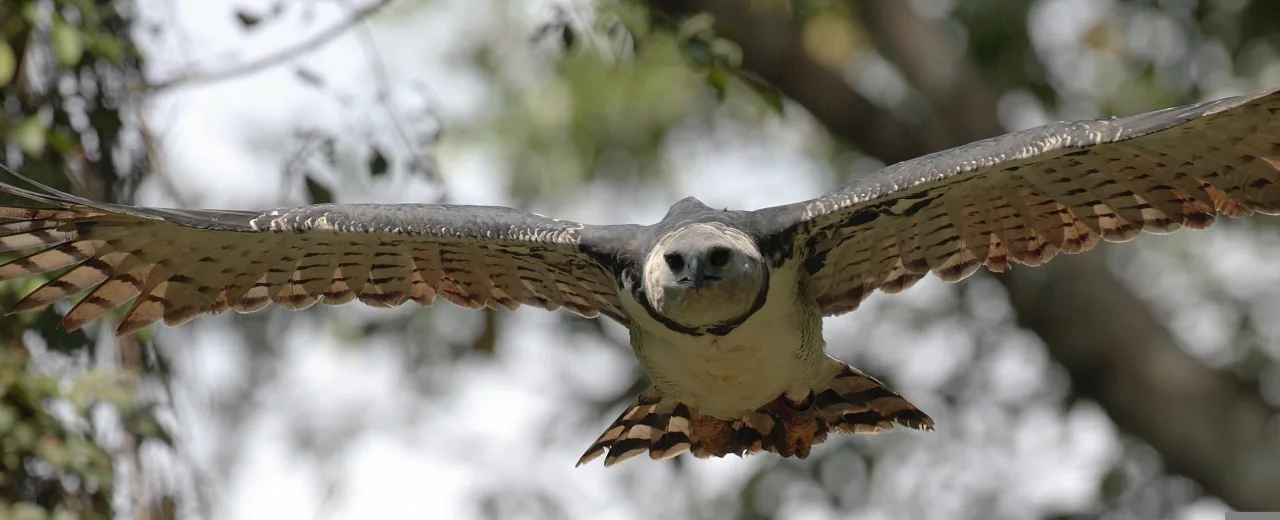 On the track of biodiversity
On the track of biodiversity
Inventory of animal species in a newly established protected area
A tapir stomps through the undergrowth, trying to be as quiet as possible so as not to be noticed by the jaguar. The loud creaking of the cicadas helps him to remain undetected. Far above him, in the canopy of the kapok tree, a boa meanders towards the nest of the harpy eagle, the largest eagle in the Amazon. From a distance, you can hear the afternoon calls of a horde of howler monkeys... This is how one imagines everyday life in the depths of the Amazon. If we were to go on an excursion to the Amazon, however, we would hardly get to see any of these animals. They have learned to hide and camouflage themselves well. Only skilled hunters, like many indigenous groups or scientists with special equipment, have learned to "read" the forest. Only they notice whether the forest is healthy or not. For example, if there are many Amazon eagles, it means that the kapok trees in which they breed are also doing well. And the boa also finds its food.
Necessity
Biodiversity inventory as a basis for a management plan for the protection of biodiversity in the newly established protected area
Activity
A trained team of researchers is conducting an inventory of biodiversity in the protected area in the Brazilian Amazon
Countable effort
Number of hours worked by the research team
Result
By determining the biodiversity in this area, concrete conservation measures can be planned and established
Systemic effect
Scientifically sound protection of biodiversity and measurability of the efficiency of conservation measures for endangered species in the Amazon
Background
The Amazon is the largest rainforest on earth. At 6.9 million square kilometres, it is 19 times the size of Germany. Unfortunately, about 20% (3 times the area of Germany) has already disappeared (Butler, R., 2022). The main driver of deforestation is global meat consumption. On the cleared areas, soy is grown for cattle feed and cattle, also for export to Europe (Lapola et al., 2023). But illegal gold mining, logging of precious wood trees and commercial hunting of animals also disturb the balance of this important ecosystem. But precisely because the Amazon is so huge, there are still many places where the water is clean, the forest dense and the animals numerous – especially in protected areas and indigenous territories. Indigenous people in the Amazon have lived here for thousands of years without destroying their environment (Qin et al., 2023). These areas must be protected. On the one hand, they contain a huge treasure trove of different animals. On the other hand, there are many plants here, some of which can be used to produce important medicines for us in Europe, such as jaborandí, which contains a potent active ingredient against glaucoma. Together with the indigenous Huni Kuin, a protected area is being established in the Brazilian state of Acre. The area was purchased, among other things, with the donations for Door 12 in the 24 Good Deeds Advent Calendar 2022. Now it’s time for the next phase, namely the management and protection of the land. Whether the ecosystem is intact, i.e. whether the forest is healthy, cannot be seen at first glance. For this, researchers are needed to find out how much biodiversity, i.e. how many animals and plants still exist in a piece of forest. This information is needed to decide how best to protect it so that the animals can reestablish themselves.
The good deed
Today's good deed enables a team of researchers to search the newly established protected area for animal species. They use special methods and technologies, such as tracking or camera traps that automatically take a photo of the animal when it moves. As many species as possible should make their home here. If there are predators like jaguars or ocelots, for example, you can assume that many other animals and plants live here as well. Some animals are specialists. For example, they feed on only one type of tree. If these animals are missing, trees can be planted specifically to attract them again. Some species, on the other hand, need corridors to migrate from other forest areas. The data from this inventory is therefore the basis for the management of the area. If the rainforest inventory is repeated after a few years, one can decide whether the protection measures were successful. This process is called monitoring.

About Brasilia
Brasília
Capital
215,313,498
Number of inhabitants
8,917.7
Gross domestic product per capita per year
0,754
Human Development Index
An electricity-producing fish, the electric eel, lives in the Amazon. It generates a voltage of up to 800 volts with which it paralyses its prey, other fish. By way of comparison, we get a mere 230 volts from our power socket.
About the organization and further information
Association
Living Gaia e.V.
Website
Further information and source
- Butler R. 2022: 10 Facts about the Amazon Rainforest in 2022, Mongabay (online Artikel).
- Lapola D. M., et al, 2023: The drivers and impacts of Amazon forest degradation, Science, 379(6630)
- Qin Y. et al, 2023: Forest conservation in Indigenous territories and protected areas in the Brazilian Amazon. Nature Sustainability
- Nationales Monitoringzentrum zur Biodiversität (onine Artikel) (--> Was ist Monitoring und warum ist es wichtig?)
- Global Forest Watch 2023: Brazil (--> Interaktive Karte zu den Wäldern und Abholzung in Brasilien)




